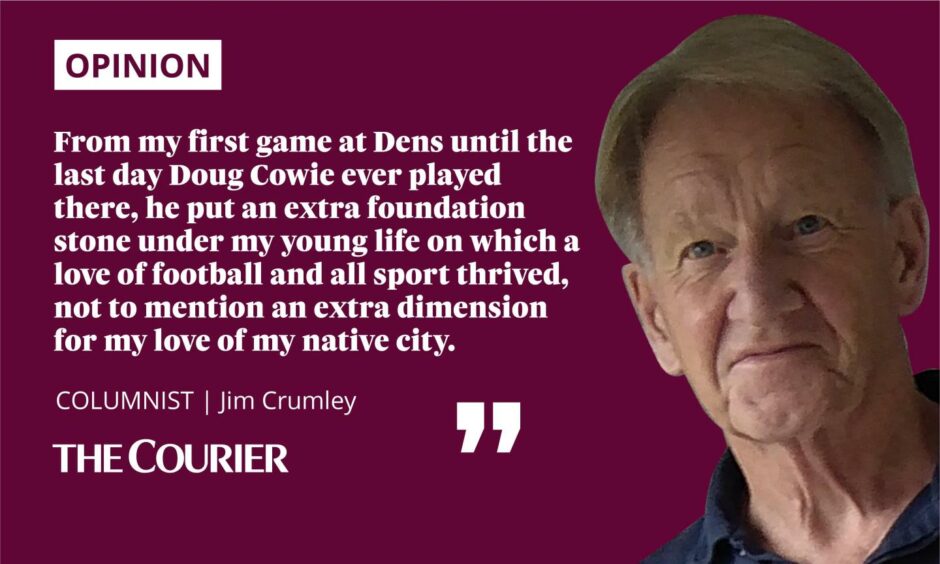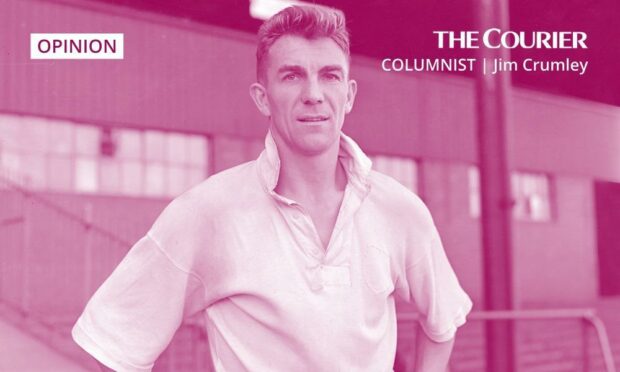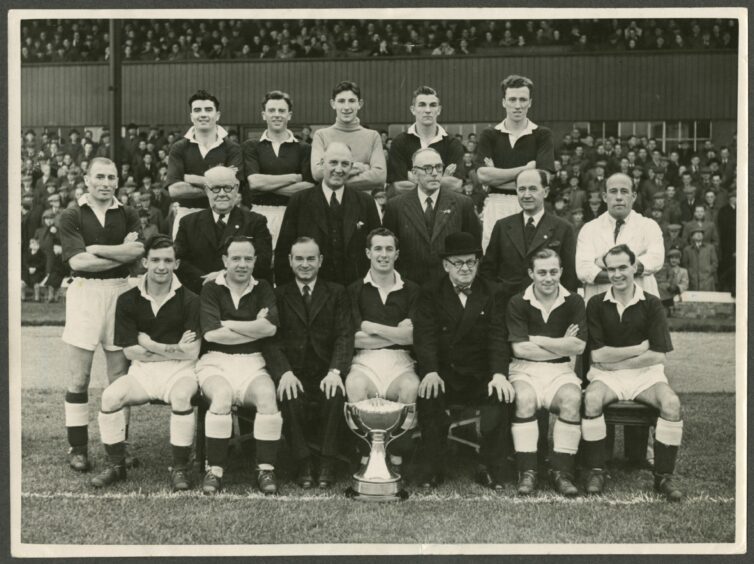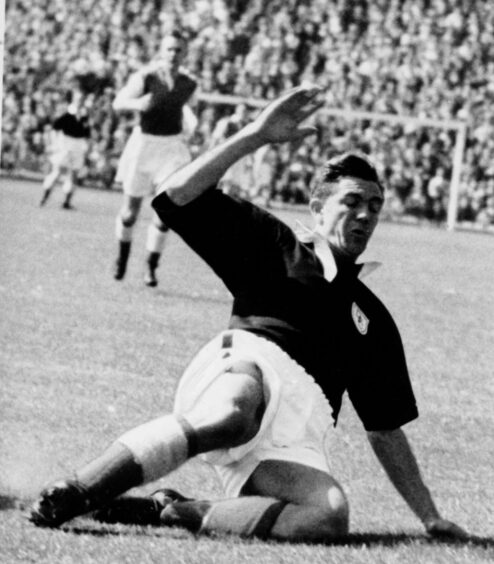Doug Cowie died.
The news reached me by way of a thoughtful and gracious email from his granddaughter, Gayle McIntyre.
I was very grateful. I wouldn’t have wanted to find out when I opened The Courier.
Not with Doug Cowie. You never forget.
March 1955, my first ever time in Dens Park. My first ever football match away from Lochee Park for that matter.
A 2-2 draw against Hibs. I was seven.

I was taken to Dens by an older boy, Ally Napier, the son of one of our neighbours in the Glamis Road prefabs.
My father’s words to me as I set off were: “Watch the left half. Ally will point him out.”
My father was a quiet, undemonstrative man with an innate and simple wisdom and a strong ethical code.
In particular, he admired sporting excellence. Those sportsmen who were not just at the top of their game but who also honoured the best traditions of their game.
Time and again in later years whenever he talked about it, he would use the same two names to symbolise his philosophy – Doug Cowie and Jack Nicklaus.
I cheerfully inherited his yardstick, and to this day I can’t think how it might be improved.
Doug Cowie led by example – and with style
From my first game at Dens until the last day Doug Cowie ever played there, he put an extra foundation stone under my young life on which a love of football and all sport thrived, not to mention an extra dimension for my love of my native city.
The Trust was saddened to hear about the passing of Doug Cowie. Doug played for the club 446 times, winning two league cups and 20 caps.Doug was selected for the '54 and '58 World Cups.Doug was also a runner-up in the League and cup. Thoughts go out to Doug's family.
📸@Dundeefc pic.twitter.com/2Adx1BRcPH— 𝐃𝐮𝐧𝐝𝐞𝐞 𝐅𝐂 𝐇𝐢𝐬𝐭𝐨𝐫𝐢𝐜𝐚𝐥 𝐓𝐫𝐮𝐬𝐭 (@DFCHistorical) November 27, 2021
He led by example.
He was not just a fine player. Doug Cowie was stylish in an era when the weight of the boots and the ball (with that lethal lace to leave its imprint on your forehead when you headed it) legislated against style.
From the day that he was ungraciously and ungratefully discarded from the Dundee team and he faded from my sight, he brightened and flourished in my memory.
Now, and for perhaps the last 20 years or so, the images of him I treasure act on my subconscious as a kind of internal spotlight.
Some passing remark or a passage of writing illuminates my personal treasury of Dens Park occasions, and he’s there, standing quietly in a dark blue shirt with an open collar and the old white badge.
My ideas about football, about sport, grew around him.
And I began to see how the example of a single individual could change the fortunes and the attitudes of an entire team.
Dundee FC ties through three generations
Almost 20 years ago, I wrote a book about my goalkeeper grandfather Bob Crumley, and was invited to Dens Park to give a talk about him.
I was asked if I would like a presentation photograph of a Dundee player, and if so which one.
I asked for Doug Cowie.
The result, a handsomely framed montage of eight images is in front of me as I write this.
It’s a mix of posing-for-the-camera shots in which he looks edgy and uncomfortable, and action pictures in which he doesn’t.
It’s more than a souvenir, it’s also a fragment of a shared history, at the heart of which is the one footballer who turned my head more than any other and my father’s admiration for him.
A chance encounter and a precious memory
I never met Doug Cowie, much as I would love to have sat down with him in the years when he had time on his hands to talk football and life.
But I do have a single non-football memory of him.
I was walking up Loons Road with my father for Sunday afternoon tea at Auntie Meg’s in Byron Street.
There was a man on the other side of the street, and if memory serves he was walking with a wee girl, younger than me.
Dad took the uncharacteristic step of pointing him out to me. All he said was: “There’s Cowie.”
But the man had heard, looked over and smiled and lifted a hand.
“A fitting tribute”
James McPake dedicates today’s win to Doug Cowie #thedee pic.twitter.com/6YXpDdufND
— Dundee Football Club (@DundeeFC) November 27, 2021
At the time, I thought Dad had been embarrassed, that he hadn’t meant for Doug Cowie to hear.
But now, I’m not so sure. I think perhaps it was as much a moment for him to honour his sporting hero as it was for me to honour mine.
We smiled, waved back, walked on.
Once, sitting on a 17 bus going from Glamis Road into town, my father and a stranger started talking about football.
The man then looked at me and asked if I liked football. I nodded.
Did I go to Dens? I nodded again.
Then: “Who’s your favourite player?”
“Doug Cowie”, I replied, suddenly enthusiastic.
He laughed, dug into a pocket, and handed me half-a-crown.
“Tell him that’s for you from Billy Steel,” he said.
The thing about people like Doug Cowie is they touch so many people they don’t know in ways they will never know.
I’m one of those people.
Doug Cowie died. You never forget.


